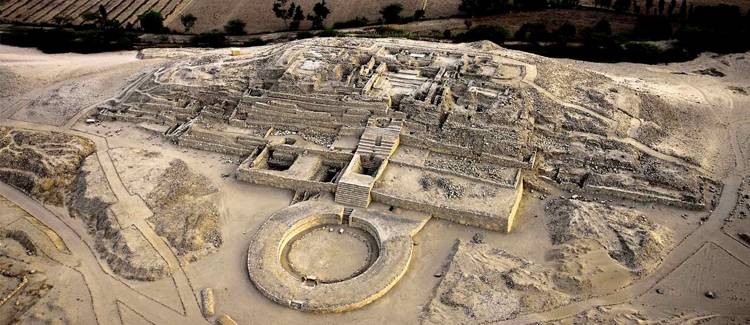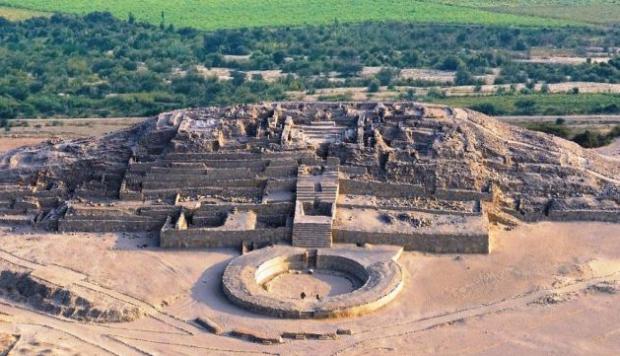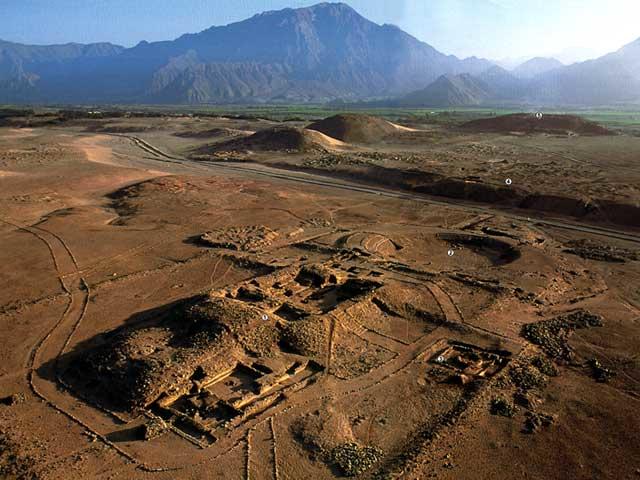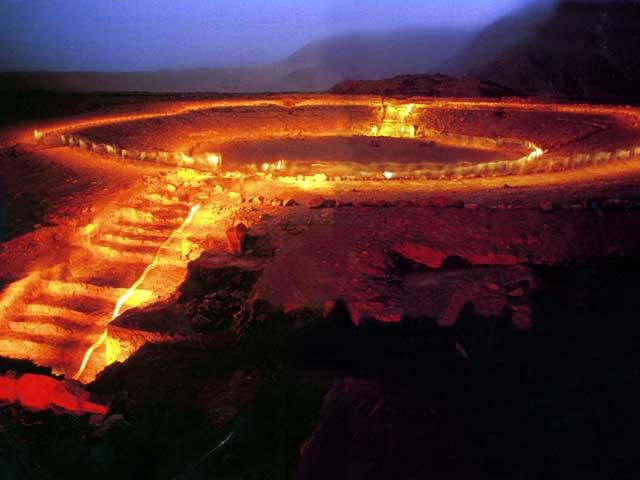Latin America
Related: About this forumArchaeologists: Peace reigned within Americas' oldest civilization
Online News EditorOctober 17, 2022
By Paula Bayarte
Lima, Oct 17 (EFE).- Neither weapons nor walls. The Caral civilization, the most ancient in the Americas, left no warlike remains, proving that peace reigned among that people and their contemporaries living in pre-Hispanic Peru, the head of an archaeological dig that is still yielding up its secrets – after almost three decades of study – said Monday.
Researchers have not found a single walled city, something that has certainly turned up elsewhere in the world, and no weapons, and the relationship has always been linked with the exchange of products and knowledge with other peoples, said the director of the Caral Archaeological Zone, Rush Shady Solis, at a press conference.
The Lupe Valley, located north of Lima, is a mountainous zone near the coast and not far from the jungle, which was the home of the Caral civilization between approximately 3,000 and 1,800 B.C.E.
Shady arrived in the valley in 1994 with a curiosity that made her certain that underneath the huge mounds of earth that looked like hills would be found the structures erected by a pre-Hispanic culture.
What she discovered went far beyond that, given that the valley is sprinkled with 25 sites that contain square-based pyramids, round plazas and innumerable remains like burials, tools and statuettes that have helped researchers understand a culture that attained relatively high scientific development and maintained connections with nearby peoples.
More:
https://www.laprensalatina.com/archaeologists-peace-reigned-within-americas-oldest-civilization/








This Little-Known Peruvian Civilization Built Pyramids as Old as Ancient Egypt's
Caral was an architectural marvel—a 1,500-acre complex constructed by the oldest known civilization in the Western Hemisphere.
RATHA TEPAUG 6, 2021
Colossal pyramid structures in the Americas as old as those in Egypt? The Sacred City of Caral-Supe, in central coastal Peru, boasts an impressive complex of ancient monumental architecture constructed around 2600 B.C., roughly the same time as the earliest Egyptian pyramid. Archaeologists consider Caral one of the largest and most complex urban centers built by the oldest known civilization in the Western Hemisphere.
The 1,500-acre site, situated 125 miles north of Lima and 14 miles from the Pacific coast, features six ancient pyramids, sunken circular plazas and giant staircases, all sitting on a windswept desert terrace overlooking the green floodplains of the winding Supe River. Its largest pyramid, also known as Pirámide Mayor, stands nearly 100 feet tall, with a base that covers an area spanning roughly four football fields. Radiocarbon dating on organic matter throughout the site has revealed it to be roughly between 4,000 to 5,000 years old, making its architecture as old—if not older—than the Step Pyramid of Saqqara, the oldest known pyramid in ancient Egypt.
That remarkable discovery places Caral as one of the oldest known cities in the Western Hemisphere. Coastal Peru has long been considered one of the six recognized cradles of world civilization, and new archaeological discoveries continue to push back the dates of when the region’s “mother culture” was established. Caral was the first extensively excavated site among some two dozen in a zone along Peru’s central coast known as the Norte Chico area. Archaeologists believe the sites collectively represent the oldest center of civilization in the Americas, one which lasted from roughly 3000 to 1800 B.C., completely uninfluenced by outside forces. It flourished nearly 4,000 years before the start of the powerful Incan Empire.

View of one of the amphitheaters of the Caral archaeological complex, in Peru. Almost 5,000 years old, it was built by one of the oldest cultures in the world.
ERNESTO BENAVIDES/AFP via Getty Images
Despite Caral’s significance, decades passed between when the first scholars stumbled upon the area, and when they recognized its importance. German archaeologist Max Uhle explored the Supe Valley, but not Caral itself, as part of a wide-ranging study of ancient Peruvian cities in the early 1900s. But it was American historian Paul Kosok, who is largely recognized as the first scholar to recognize and visit what is now known as the site of Caral in 1948. In his 1965 book, Life, Land and Water in Ancient Peru, he referred to the site as Chupa Cigarro Grande, after a nearby hacienda.
More:
https://www.history.com/news/caral-peru-norte-chico-oldest-civilization-western-hemisphere
If you have the inclination, please compare the giant sunken circle with the kivas in the United States created by various Native American people:
https://tinyurl.com/4kzwb2tt